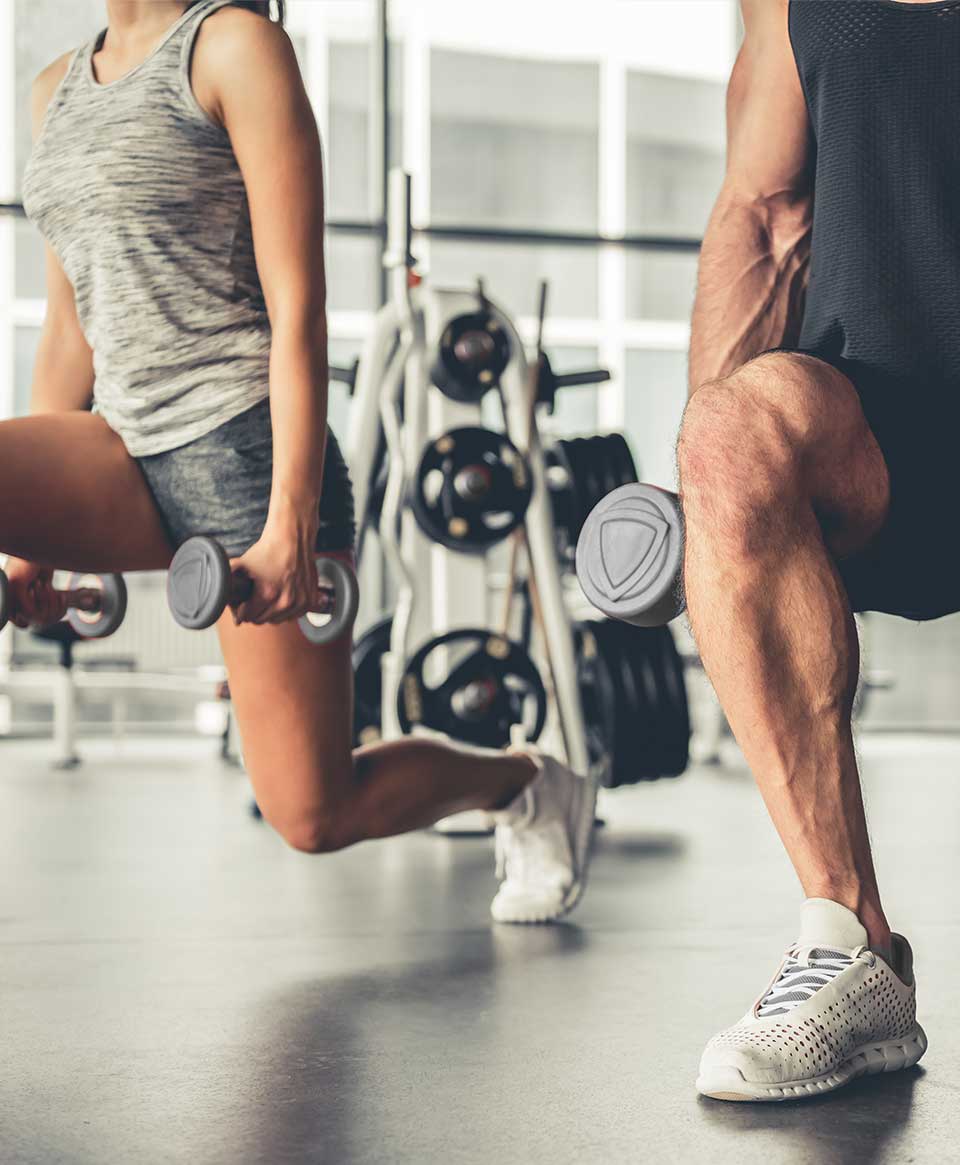
You know the gym basics. Do alternating days of resistance training, include core exercises in your routine, and stretch only after you’re warmed up. But once you’ve met your original goals or find yourself hitting a plateau, it’s time to raise the bar. Get more out of your workouts and exercises with the following tips:
Add Speed
Traditional methods of boosting speed include sprints and intervals, during which you alternate fast runs with slower “rest” periods. But another way to really shave off time is by adding plyometrics to your workout.
Plyometric training involve explosive movements that require muscles to lengthen and then immediately contract, much like a spring. They are excellent for runners. Incorporating them into your routine can improve your running economy, which means you expend less energy with each stride. The rapid-fire movements train you to accelerate quicker, increasing overall speed and efficiency. A simple way to incorporate plyometrics into your workout is with jump squats.
How to do it: Stand with feet hip-width apart and hands clasped behind your head. Keeping your weight on your heels, squat down until your thighs are parallel to the floor. Pause in the squat, then jump up as high as possible, absorbing the impact of the landing by pushing your hips back and bending your knees before immediately jumping up again. Do two or three sets of 15 reps.
Endurance
Being able to finish a 10k or just make it through your entire cycling class largely depends upon your core strength. Your core is involved in the transfer of energy to your arms and legs. So in the later stages of an event or workout, that energy transfer will be thrown off if your core is weak. In addition to the traditional plank, try this challenging move called The Hollow Rock.
How to do it: Lie on your back with your arms extended overhead by your ears. Engage your core and begin rocking your entire body by lifting your feet and legs up and then raising your upper body and arms while lowering your legs. Your body should move like a rocking chair and your abs should feel challenged throughout the movement. Start with 20 to 30 seconds and work up to two minutes.
Muscle Definition
It’s frustrating when you train hard and still don’t see the muscle tone and definition you want. Fine-tuning your diet can help by increasing lean tissue and decreasing body fat. Even if you have a relatively healthy diet already, cleaning it up a bit more can help reveal the underlying muscle you’ve built. The cleaner you eat, the leaner you will be.
How to do it: For a sculpted look, focus on eating protein at each meal and snack and decreasing salt and sugar. Lean protein (fish, low-fat dairy, eggs, and lean meat) helps you repair and build muscle after workouts and feel full faster, keeping calories in check. Salt and sugar, on the other hand, can cause bloating, hiding those hard-earned muscles. If you sweat a lot during a long event, such as a marathon, replace your electrolytes during and after your workout and cut back on salt later in the day.
Flexibility
Traditional stretching will help you get more limber. But you can take it to the next level by targeting tight spots with a foam roller or massage ball. This releases the fascia, connective tissue that supports the muscle (think of the white covering on a chicken breast), loosening tight areas and allowing for greater flexibility. A recent study in Medicine & Science in Sports & Exercise showed that foam rolling unravels trigger points (tiny knots that develop in overworked muscles), relieving muscle spasms and allowing for better circulation. Used after a workout, the roller can also ease muscle soreness.
How to do it: Lie on a massage ball or foam roller and apply pressure until you find a trigger point (a knot or tight area), hold at the trigger point for 20 to 60 seconds or until you feel it release. Be sure to pinpoint areas above and below the site of specific aches and pains, as often pain in one spot is an indicator of tension somewhere else in the body.
Strength
The general rule for strength gains is the same regardless of the muscle group you target: You must use enough weight or resistance to overload the muscle beyond its usual limits. Aside from upgrading to heavier weights, you can increase the intensity of your usual body-weight moves with specific tweaks, such as raising a leg during planks or standing exercises like bicep curls. Try the following technique to amp up one of the most well-known exercises, the Push-up.
How to do it: Try a super-slow Push-up: On your knees or toes, instead of pumping out reps, time yourself to make each rep last a full 30 seconds. Take 15 seconds to lower yourself and 15 seconds to push back up. Do this at the beginning of your upper body routine.

